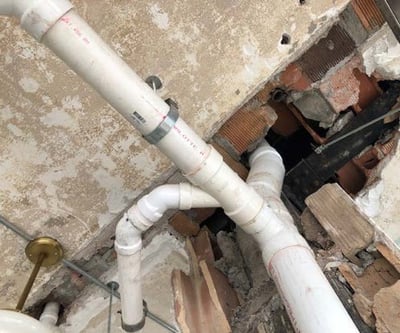Firestop Solutions for Archaic Construction

Figure 1
A growing trend across the nation is the revitalization of old office buildings, train stations and retail spaces to create residential lofts and hotels. Many of these structures are decades old and in most cases were constructed of materials that have not been tested like modern walls and floors to ASTM E-119. STI’s Engineering Services is tasked on a consistent basis to apply UL Test data to correlate with these archaic construction elements. The building codes have tables that provide fire resistance ratings for various building materials that may not have been tested but have inherent fire resistance properties. Such materials and assemblies are considered archaic construction and are essentially grandfathered into the code as being acceptable alternatives to more conventional fire resistance rated construction. Examples include common brick walls, plaster and lath, or terracotta block walls.
Often these construction elements can see damage due to a change in occupancy over the years or have just become brittle due to age. Many times, the openings were not created carefully and therefore can have large annular spaces that have to be considered such as terracotta and plaster as shown in Figure 1.

Figure 2
Large annular space must be addressed in many different ways depending on the type and size of the penetrant. When combustible piping is used, steel plates and firestop sealant are often required to close the annular space down. This adds more difficulty to the application by the need for additional materials as demonstrated in Figure 2.
STI’s Engineering Services has issued EJs for penetrations through archaic construction. We can typically issue EJs for plaster and lath utilizing the test data we have obtained from our W-L-Series designs where the depth of plaster is equivalent to the thickness of the gypsum layers in the U300/U400 Wall Design. For terracotta and red brick type masonry assemblies we look at systems that are similar to our W-J or C-AJ Series designs. Our gypsum testing is also utilized for masonry conditions depending on type and thickness of the assembly.
More information on archaic construction can be found in the International Building Code (IBC) in the Chapters relating to Prescriptive and Calculated Fire Resistance. In the 2018 Edition, this is Chapter 7 sections 721 and 722, respectively.






